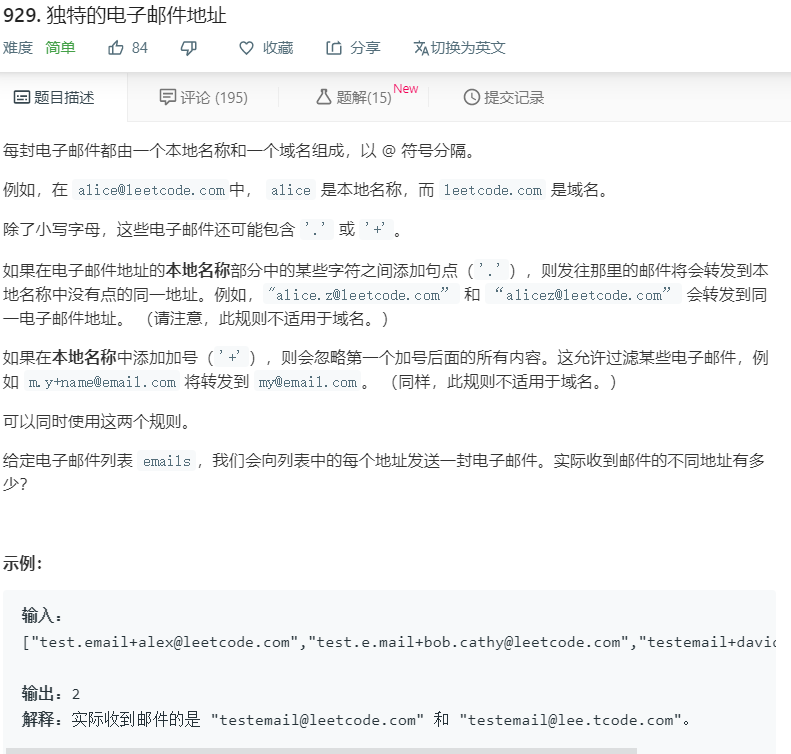
class Solution {
public int numUniqueEmails(String[] emails) {
HashSet<String> hs = new HashSet<String>();
for (int i = 0; i < emails.length; i++) {
StringBuffer temp = new StringBuffer();
int flag = 0;
for (int j = 0; j < emails[i].length(); j++) {
while (emails[i].charAt(j) == '.'&&flag==0)
j++;
if (emails[i].charAt(j) == '+')
while (emails[i].charAt(j) != '@') j++;
if(emails[i].charAt(j) == '@') flag++;
temp.append(emails[i].charAt(j));
}
System.out.println(temp.toString());
hs.add(String.valueOf(temp));
}
return hs.size();
}
}
class Solution {
public int numUniqueEmails(String[] emails) {
HashSet<String> hs = new HashSet<String>();
for (String i : emails) {
int at = i.indexOf('@'); //用一些已知的方法来确定 并且划分
StringBuffer name = new StringBuffer("");
for(int x = 0; x < at ; x++) {
if(i.charAt(x)=='+')
break;
if(i.charAt(x)=='.')
x++;
name.append(i.charAt(x));
}
name.append(i.substring(at,i.length()));
hs.add(String.valueOf(name));
}
return hs.size();
}
}
